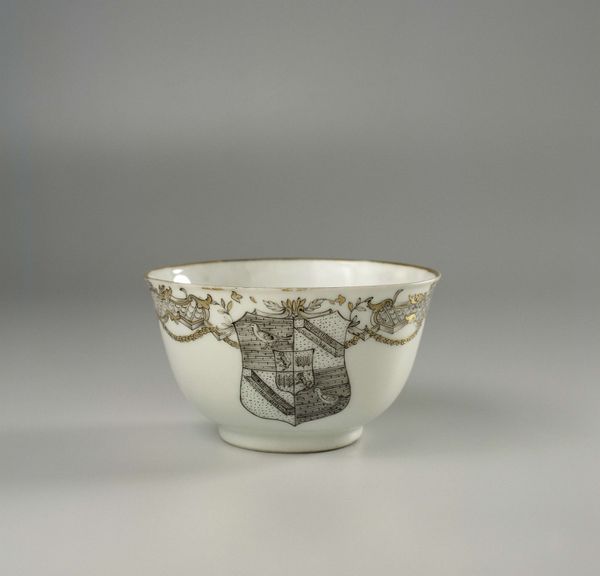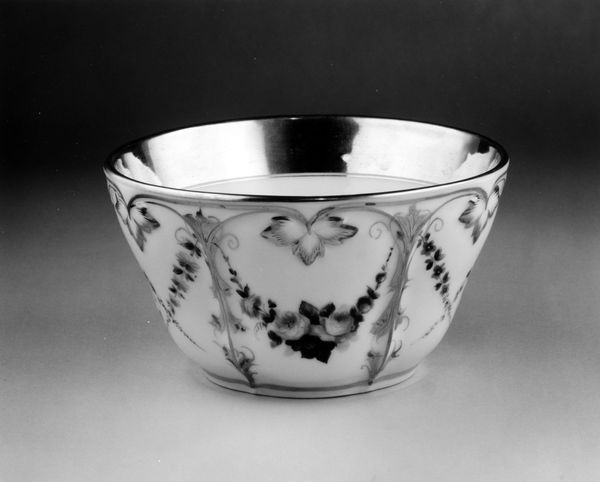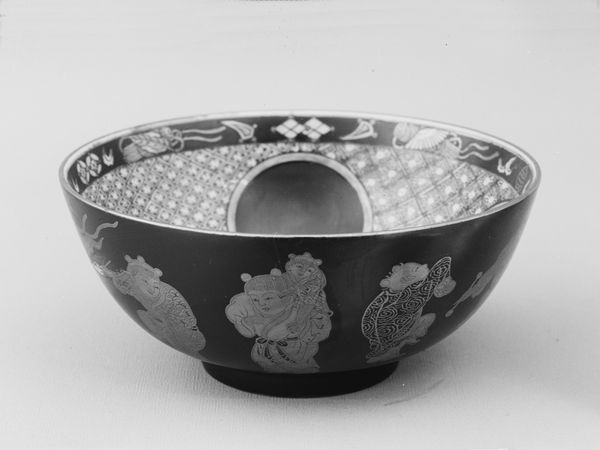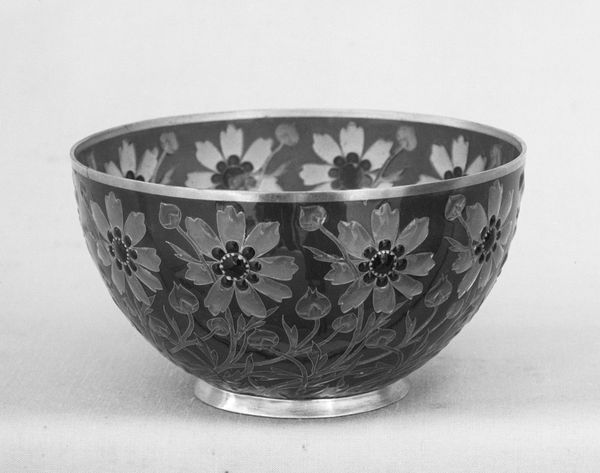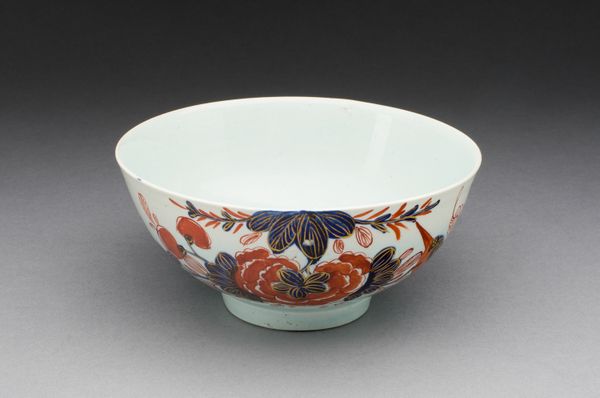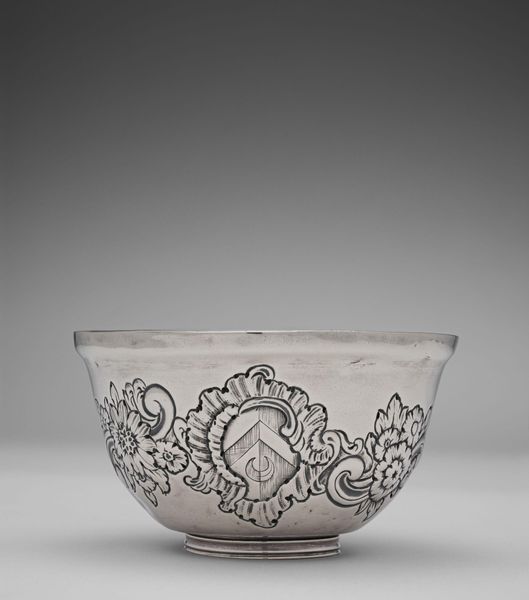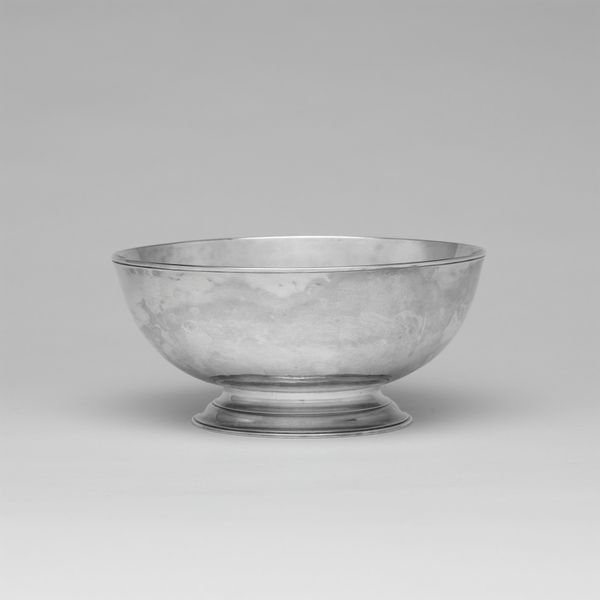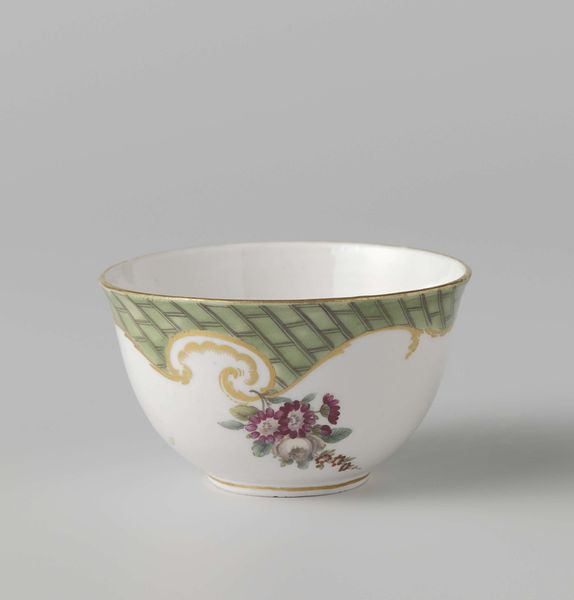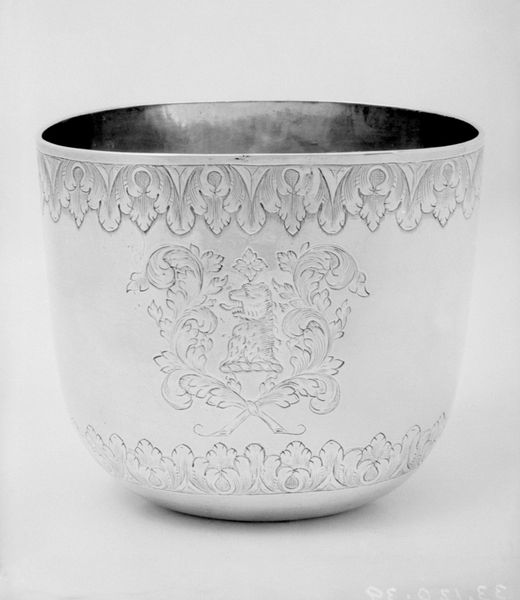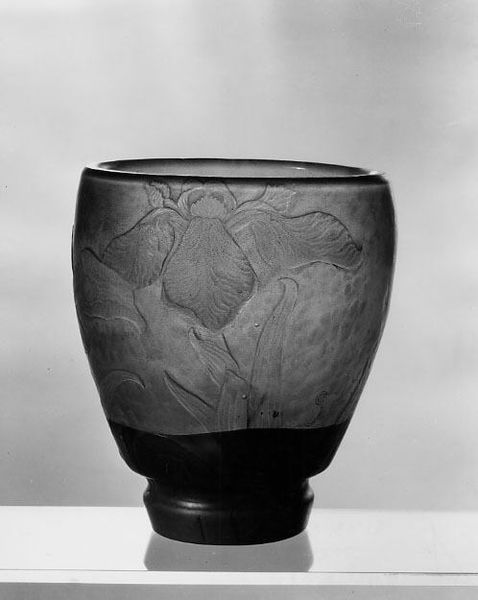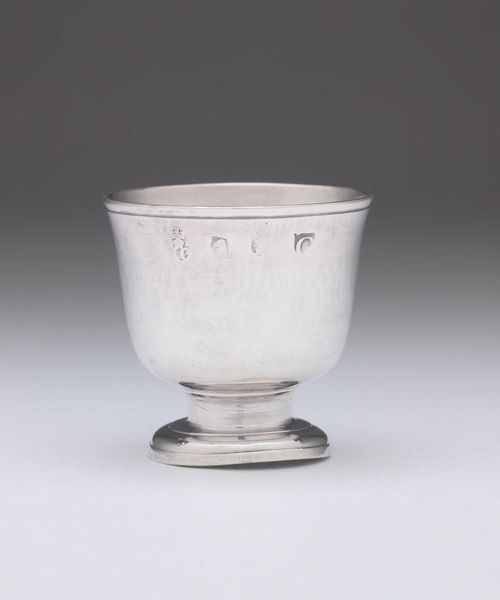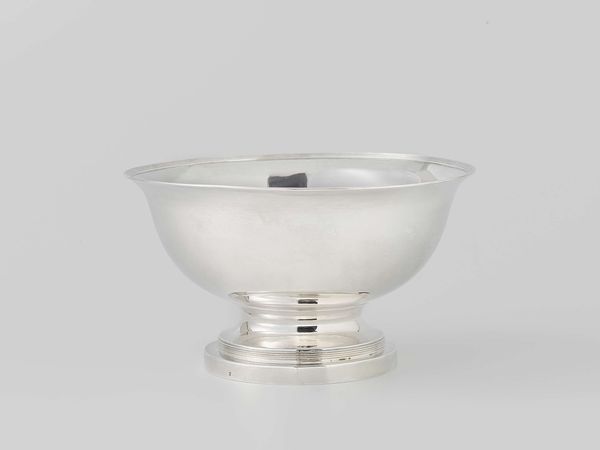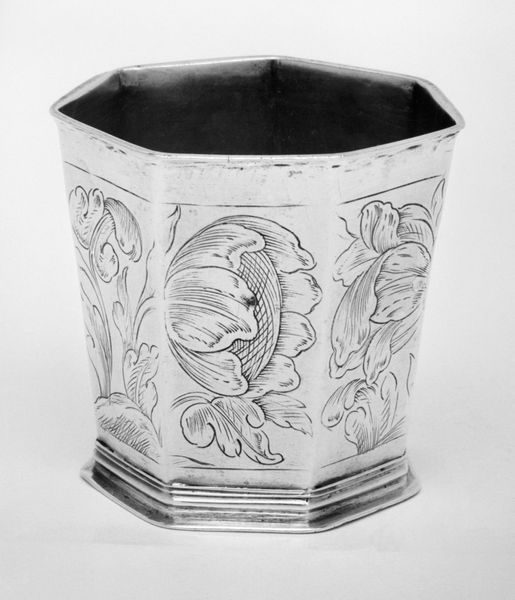
ceramic
#
asian-art
#
ceramic
#
ukiyo-e
#
japan
#
stoneware
Dimensions: H. 2 3/4 in. (7 cm); Diam. 4 7/8 in. (12.4 cm)
Copyright: Public Domain
Editor: We're looking at a stoneware teabowl by Eiraku Wazen, dating sometime between 1615 and 1868. The decorations are sparse, dark blossoms set against a pale background, and it strikes me as being remarkably understated. What aspects of the bowl's composition stand out to you? Curator: The simplicity is precisely its strength. Consider the interplay of the white glaze, subtly crackled, against the stark, almost calligraphic, rendering of the floral motif. Note the deliberate asymmetry; the blossoms aren't evenly distributed but seem to cascade around the bowl. This asymmetry isn't arbitrary. Instead, how might it affect your perception of the bowl's volume and form? Editor: I see what you mean! It guides your eye, making it feel like the bowl is turning even when it's still. It seems that asymmetry brings a sense of movement. Is there any sense of intentionality regarding how thick the strokes of the blossoms are? Curator: Precisely! The varying thickness in each painted stroke, rendered against the blank surface, activates a dynamism between void and form. The artist creates depth without traditional shading. Ask yourself, how would the piece change if the blossoms were a uniform color and thickness? What other qualities emerge with changes to color? Editor: It would lose that vital sense of energy. It also shows skill! Using asymmetry and sparse details in the piece creates harmony and shows great consideration. Thank you for making me notice the qualities of this teabowl. Curator: Indeed, understanding this stoneware is a fruitful investigation into the aesthetics of minimalism and material expression.
Comments
No comments
Be the first to comment and join the conversation on the ultimate creative platform.
